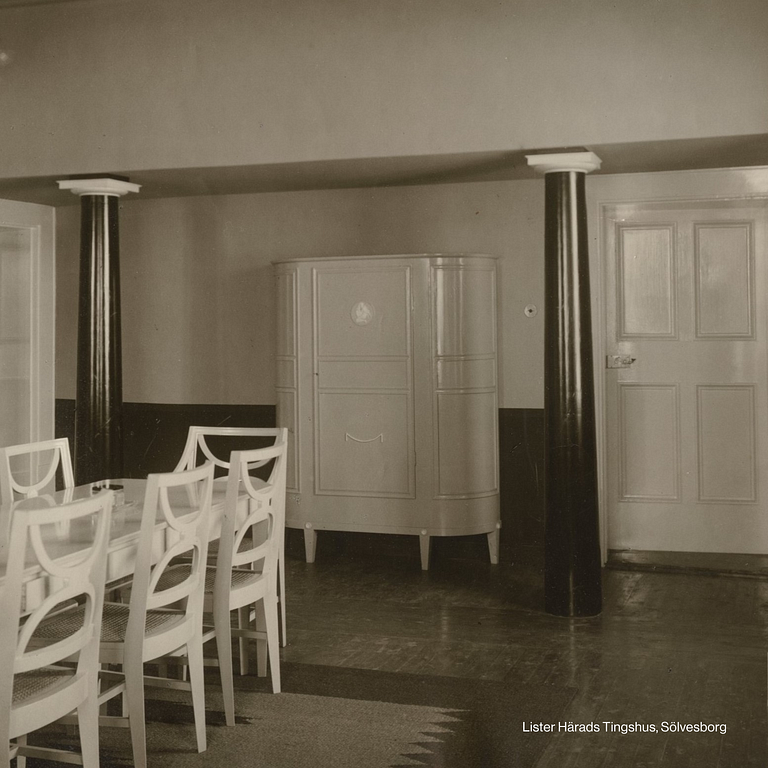Gunnar Asplund
a Swedish Grace cabinet, ca 1920.
Of demi-lune shape, painted, decorated with pearl beading, rosettes and a classical female figure, upper part with a glass door revealing a gilded and red-painted shelving interior, lower part with a door concealing a green-lacquered drawer and shelving interior. Width 105 cm, depth 43 cm, height 174.5 cm.
The present unique cabinet, designed by Asplund around 1920, was executed for his and his wife Gerda Sellman Asplund's private home at Mosebacke torg in Stockholm, and later moved to Långängens gård in Stocksund, where the family relocated in 1927. According to family tradition, the cabinet was executed at the Nordiska Kompaniet workshops in Nyköping at the request of Asplund, and it is Gerda who modelled for the carved female figure.
Repainted exterior, wear and minor damages. Keys included.
Provenance
Architect Gunnar Asplund (1885-1940).
Thence by descent to his son, architect Hans Asplund (1921-1994).
Thence by descent to his son, diplomat and UN ambassador Bo Asplund (1950-2024).
Thence by descent to the present owner.
More information
Compare with the decor on the cabinet designed by Asplund for the jury room of the Lister County Courthouse in Sölvesborg, completed in 1921.
Designer
Gunnar Asplund is considered one of the most significant and leading architects during the interwar period, both in Sweden and internationally. Asplund is seen as one of the foremost representatives of 1920s Nordic classicism, with the Skandia Theatre (1922) and the Stockholm Public Library (1928) as prominent examples. He was also one of the pioneers of functionalism, which he introduced in Sweden with the Stockholm Exhibition in 1930, where he was the chief architect.
Read more


















































































